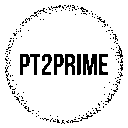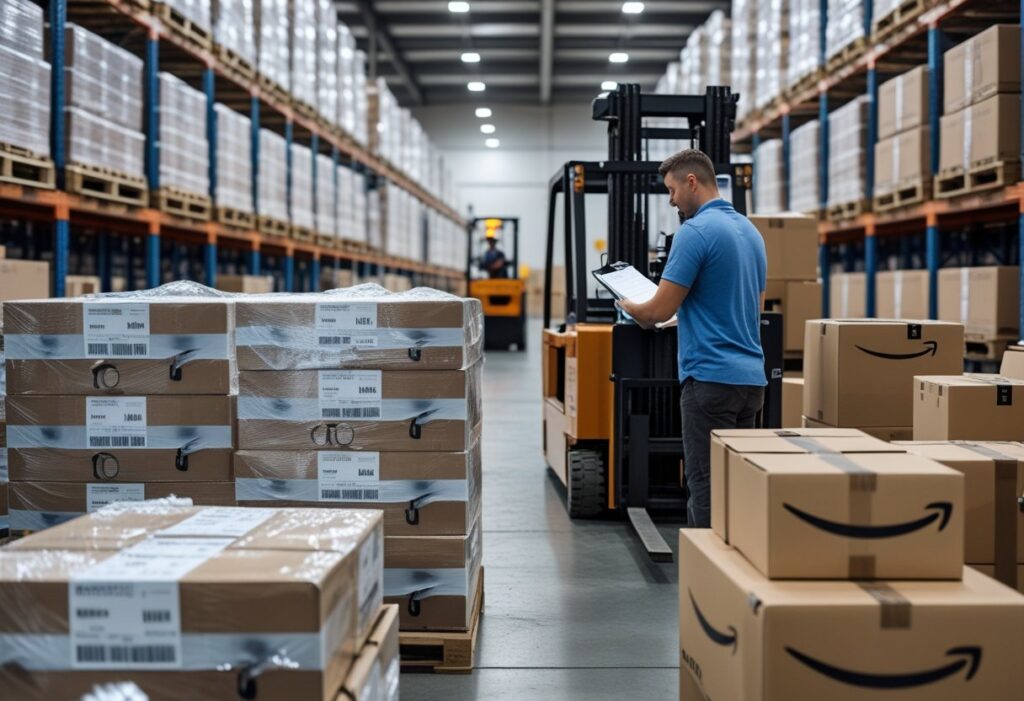When I first started selling on Amazon FBA, I quickly realized not all sourcing methods are created equal.
Retail and online arbitrage can help you dip your toes in with lower costs, but honestly, they often mean unstable inventory and tons of competition.
Wholesale sourcing gives you direct access to suppliers and bulk pricing, which makes it way easier to build a steady, scalable business.

Wholesale arbitrage basically means buying products in bulk from brands, distributors, or manufacturers at wholesale prices, then reselling them on Amazon for a profit.
Unlike scanning clearance aisles or waiting for online deals, this approach lets me work with official catalogs and actually build long-term supplier relationships.
That difference really matters—it gives me more control over inventory, pricing, and even how fast I can grow.
One of the trickiest parts is learning how to evaluate wholesale catalogs.
I use tools like Keepa to check price history and sales rank trends, and SellerAmp to calculate profit margins and ROI before I ever place an order.
By combining catalog research with data tools, I can dodge bad deals, spot consistent sellers, and stick to products that meet my sales and profit goals.
Key Takeaways
- Wholesale sourcing builds stability and long-term growth opportunities
- Comparing wholesale with retail and online arbitrage shows clear advantages
- Using tools like Keepa and SellerAmp helps avoid bad deals and find profitable products
Wholesale Vs Retail & Online Arbitrage: Key Differences
When I started looking into Amazon selling, it was clear that wholesale, retail arbitrage, and online arbitrage all take different routes.
Each method changes how I find products, how much I spend upfront, and how I deal with inventory headaches.
With wholesale, I’m buying in bulk straight from suppliers or distributors.
That usually means lower per-unit costs, but it also takes more capital to make those bigger orders.
Retail arbitrage is all about grabbing discounted items from local stores, while online arbitrage lets me do the same thing through online retailers.
Here’s a quick breakdown I keep in mind:
| Model | Where I Source Products | Upfront Cost | Scalability | Time Spent Sourcing |
|---|---|---|---|---|
| Wholesale | Suppliers/Distributors | High | High | Low |
| Retail Arbitrage | Local Stores | Low | Limited | High |
| Online Arbitrage | Online Retailers | Low | Limited | Medium |
When I’m digging through wholesale catalogs, I lean on Keepa to check sales rank history and price trends.
This helps me spot if a product is a steady seller or if it’s just a flash in the pan.
I also use SellerAmp for quick ROI calculations.
It lays out fees, margins, and competition, so I don’t end up with products that only look good on paper.
Step 1: How to Find Wholesale Suppliers
I focus on suppliers that offer reliable products, fair pricing, and consistent stock.
The best sources usually come from structured directories, trade shows, or authorized distributors working with several brands.
Each option has its own quirks, so I weigh the pros and cons every time.
Directories
I often start with wholesale directories—they save me a ton of time.
Sites like ThomasNet, Worldwide Brands, or Wholesale Central let me search by product type, brand, or niche.
These directories usually list verified suppliers, which means less risk of stumbling into a scam.
When I use a directory, I filter the results to match my target market.
If I’m chasing profitable niches, I look for suppliers with products that have steady demand but not too much competition.
I always check reviews of the directory itself, just to make sure the listings aren’t outdated.
After I find a supplier, I ask for their catalog.
Then I upload it into Keepa and SellerAmp—Keepa for price history and trends, SellerAmp for ROI, fees, and competition.
This step saves me from jumping on products that look tempting but won’t actually sell.
Trade Shows
Trade shows are a great way to meet suppliers face-to-face.
I can ask about pricing, minimum order quantities, and shipping terms right on the spot.
That kind of direct contact usually builds trust way faster than email ever could.
I prep before attending by checking which brands and distributors will be there.
I make a shortlist of booths that fit my product goals and the niches I’m interested in.
At the show, I grab catalogs and business cards, then follow up quickly while the conversations are still fresh.
Trade shows also help me spot new product trends before they get crowded on Amazon.
Sure, there’s the cost of travel, but honestly, the connections often pay for themselves over time.
Distributors
Distributors buy from multiple brands and resell to retailers like me.
They often have lower minimum order quantities than manufacturers, which is perfect if I’m not ready to commit to massive bulk orders.
I like working with distributors because I get access to a wide range of products in one place.
This lets me test out different categories and find what actually works—without juggling a dozen suppliers.
The trade-off is that their prices are usually a bit higher than buying straight from a brand.
Once I get a distributor’s catalog, I run it through SellerAmp’s bulk analyzer for ROI, fees, and competition.
Then I double-check with Keepa to make sure the sales rank and price history look solid.
This way, I don’t waste cash on slow movers.
Step 2: Evaluating Wholesale Catalogs And Pricing

When I get a wholesale catalog, I look for the basics: product names, UPCs or ASINs, and the supplier’s cost.
Without those, it’s almost impossible to check if an item is even worth considering for Amazon.
I use Keepa to dig into market trends and price history.
This helps me decide whether a product has stable demand or if it’s just a seasonal blip.
If the sales rank is flat or dropping, that’s usually a hard pass for me.
Next, I run products through SellerAmp (SAS) for estimated profit margins, Amazon fees, and competition.
I want to see, at a glance, if the buy cost leaves enough room for profit after all those fees.
Red flags? Amazon itself selling the item or way too many competing offers—those usually make it tough to win the Buy Box, even if I play with dynamic pricing.
To keep things simple, I set some buying rules for myself:
| Sales Rank Range | Minimum ROI | Notes |
|---|---|---|
| 0–50k | 30% | Fast sellers |
| 50k–100k | 40% | Moderate demand |
| 100k+ | 50%+ | Higher risk |
By sticking to these, I avoid most bad deals and zero in on products that fit my pricing strategies and sales goals.
Step 3: ROI, Sales Rank, And Data Tools For Decision Making
Whenever I’m looking at a wholesale catalog, I start by checking if the numbers actually make sense.
The ROI (Return on Investment) needs to be high enough after Amazon fees, shipping, and all the other costs.
Here’s my simple formula:
ROI = (Net Profit ÷ Product Cost) × 100
For example:
| Product Cost | Amazon Fees | Sale Price | Net Profit | ROI |
|---|---|---|---|---|
| $10 | $5 | $25 | $10 | 100% |
I keep a close eye on Sales Rank too.
A low rank in the Amazon Best Sellers list usually means steady demand, while a sky-high rank often means slow sales.
Keepa lets me track price history and sales rank trends over time, so I’m not just guessing based on a single snapshot.
If I want a deeper dive, I’ll use SellerAmp with Keepa to check for consistent demand and a stable buy box price.
It really cuts down on the guesswork.
Sometimes, I’ll cross-check with Jungle Scout and Helium 10 to estimate sales volume and see how crowded the listing is.
Those tools help me get a more realistic idea of what I might actually sell.
Finally, I run everything through InventoryLab to calculate exact costs, margins, and ROI before I ever place an order.
This step keeps me from overpaying for items that look good at first but don’t deliver in the end.
Common Wholesale Sourcing Pitfalls To Avoid
When I first dipped my toes into wholesale sourcing, I got lured in by the lowest prices I could find. I didn’t really pay attention to quality or whether the products had the right certifications.
Cheap deals are tempting, but if the product’s subpar or missing compliance docs, you might face returns, account suspensions, or worse—legal headaches. I learned that lesson the hard way, and I’d rather not repeat it.
Another thing that caught me off guard was ignoring shipping costs and storage fees. A product might look like a winner in the catalog, but once you factor in freight, Amazon FBA fees, and those sneaky long-term storage charges, the profit can vanish.
Margins shrink fast if you don’t run the numbers. I try to get a handle on all those hidden costs before committing to anything.
Inventory management? That’s another landmine. If I order too much, my cash gets tied up and I risk storage penalties.
Order too little and I run out of stock, which means lost sales and annoyed customers. It’s a weird balancing act, honestly.
When I comb through wholesale catalogs, I’ll usually fire up Keepa to check sales rank history and price trends. SellerAmp is my go-to for ROI calculations and competition checks.
These tools help me dodge products with flaky demand or margins that are just too thin to bother with. I don’t always get it right, but I’m getting better at spotting red flags.
Branding and customer satisfaction are easy to neglect. If I just pick generic products, I end up in a price war with everyone else.
Sometimes I’ll look into private label options or eco-friendly packaging—something to stand out and build a bit of long-term value.
And, I never put all my eggs in one basket. Depending on a single supplier is risky—supply chain hiccups, delays, or sudden changes can throw everything off.
Having backup suppliers and mixing up my product lines gives me a little more peace of mind. It’s not perfect, but it helps.
Frequently Asked Questions
I get a lot of questions about the differences between wholesale and retail sourcing, how wholesale arbitrage actually works, and what it takes to find solid suppliers. I also spend a surprising amount of time talking about how I review catalogs, crunch ROI numbers, and spot warning signs before buying.
What is the difference between wholesale and retail arbitrage for Amazon FBA sellers?
Retail arbitrage is when I buy discounted stuff from local stores and flip it on Amazon. Online arbitrage is pretty much the same, just from websites instead of brick-and-mortar shops.
Wholesale is different—I’m buying straight from brands, distributors, or manufacturers, usually in bigger quantities. That usually means steadier inventory and better pricing, at least in my experience.
Can you explain the concept of wholesale arbitrage and how it works for Amazon FBA?
Wholesale arbitrage is basically buying products in bulk at wholesale prices and sending them off to Amazon’s fulfillment centers. Amazon handles the storage, shipping, and even customer service.
The profit is whatever’s left after subtracting the wholesale cost and all those Amazon fees from the selling price. Simple in theory, but the details matter.
What are the steps involved in sourcing wholesale products for Amazon FBA?
I start by setting up a professional Amazon Seller account. Then I dig into product categories that seem profitable and start reaching out to suppliers.
Once I get wholesale catalogs, I check for any product restrictions and usually start with a small test order. If the product actually sells and the margins hold up, I’ll scale up my order next time.
How do I analyze wholesale catalogs to find profitable products for Amazon FBA?
I use Keepa to look at sales history and price trends. That helps me steer clear of products with unpredictable demand.
With SellerAmp, I can quickly scan for estimated profits, competition, and whether a product’s restricted. It’s not foolproof, but it saves me a ton of time.
What is the best way to conduct ROI analysis for wholesale products on Amazon FBA?
I figure out ROI by comparing the total landed cost of a product to the expected net profit after all the Amazon fees. So, if I pay $10 and clear $4 after fees, that’s a 40% ROI.
I try to stick to a minimum 30% ROI, just to have some cushion in case prices drop or fees creep up. It’s not a hard rule, but it keeps me out of trouble most of the time.
How can Amazon FBA sellers avoid bad deals when purchasing wholesale items?
I steer clear of suppliers who can’t provide invoices that Amazon will accept. That rule alone saves a lot of headaches.
Honestly, I also try to avoid products swamped with competing sellers or razor-thin margins. There’s just not enough room for profit—or sanity—there.
Before I commit to anything, I dig into the sales rank history. It’s a quick way to spot red flags.
I always check the brand’s policies, too. Some brands just don’t want Amazon resellers, and that’s their call.
And, of course, I make sure the supplier is actually okay with Amazon sellers. This helps dodge issues like surprise returns, price wars, or even account suspensions down the line.


